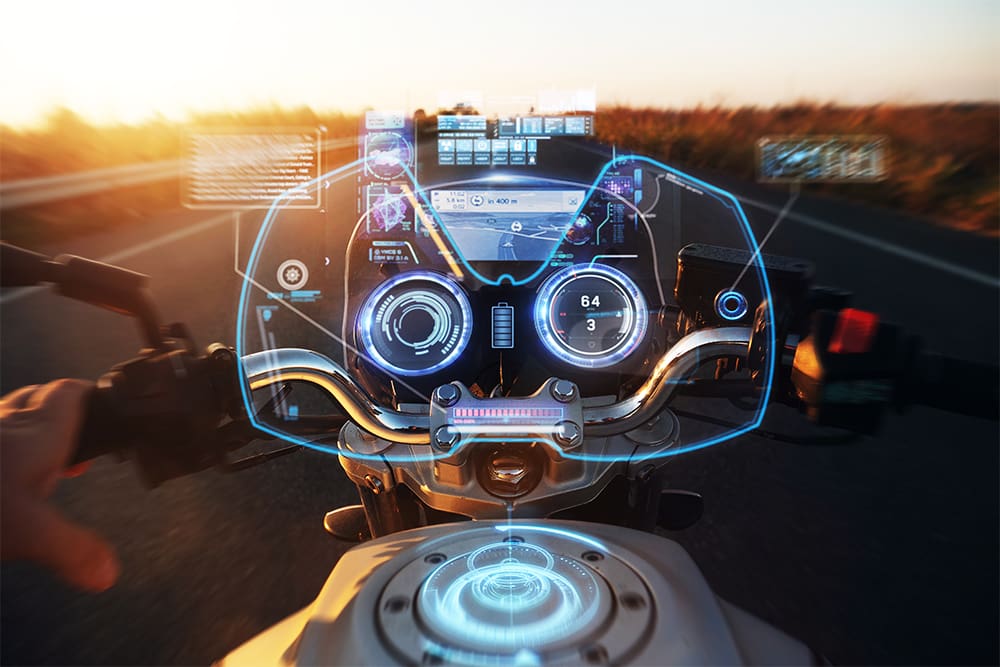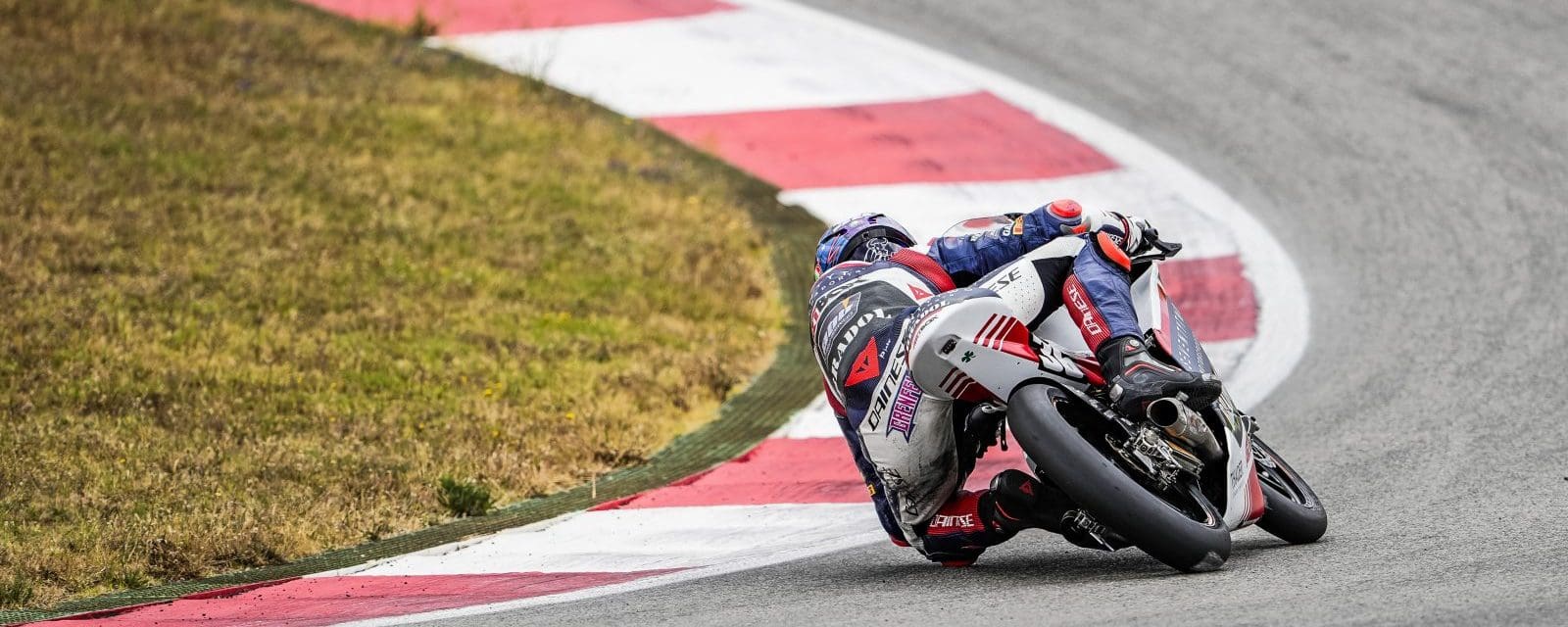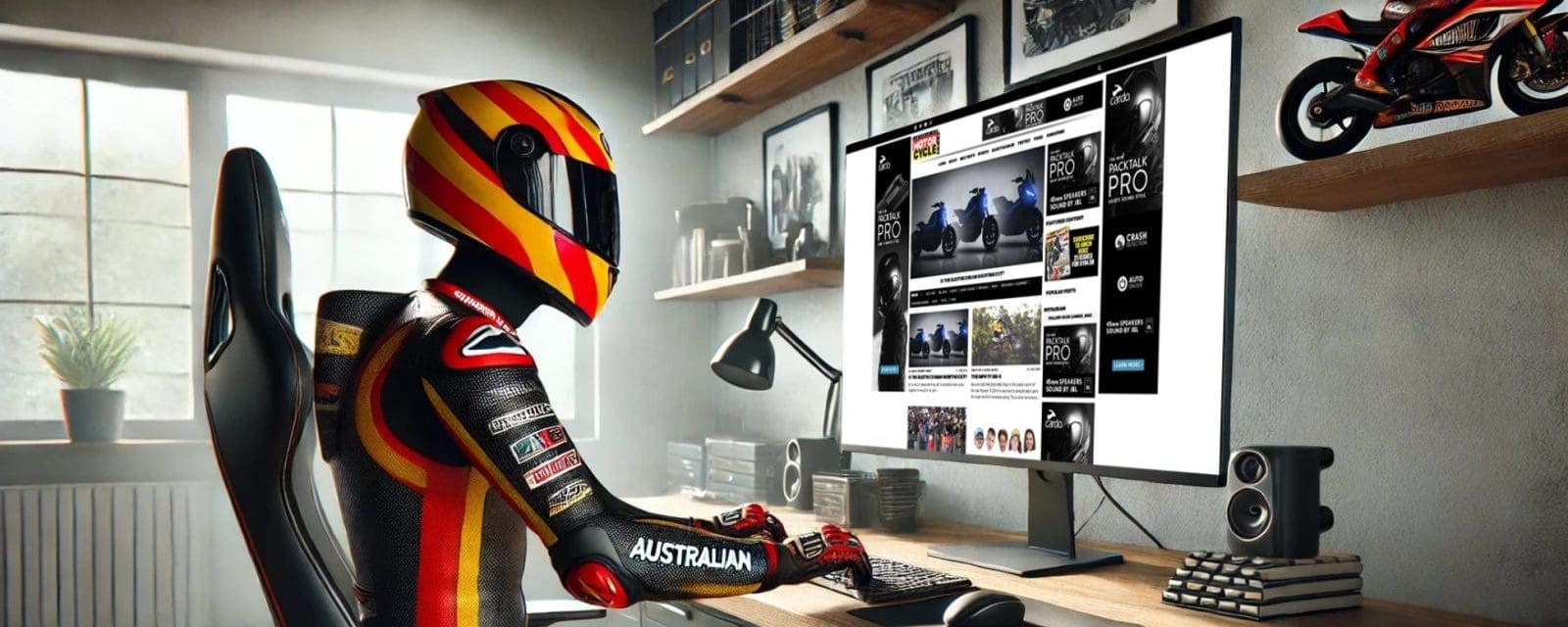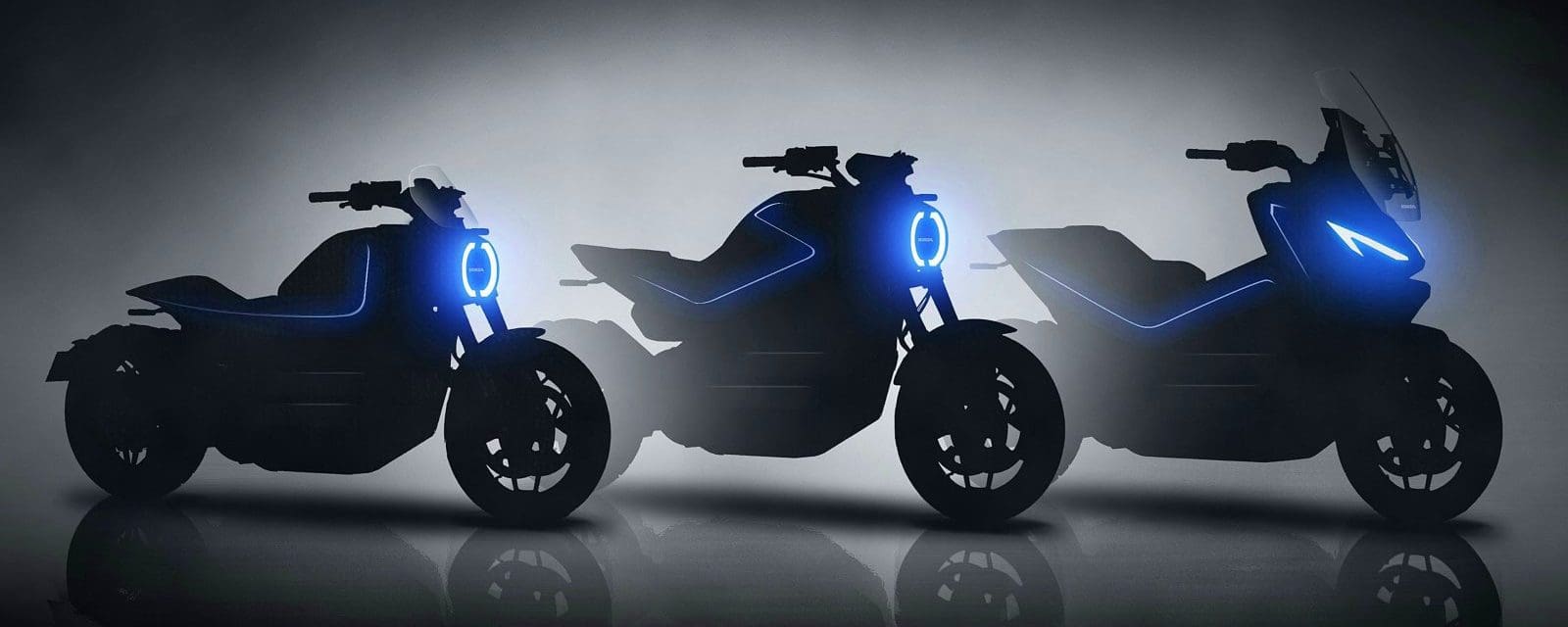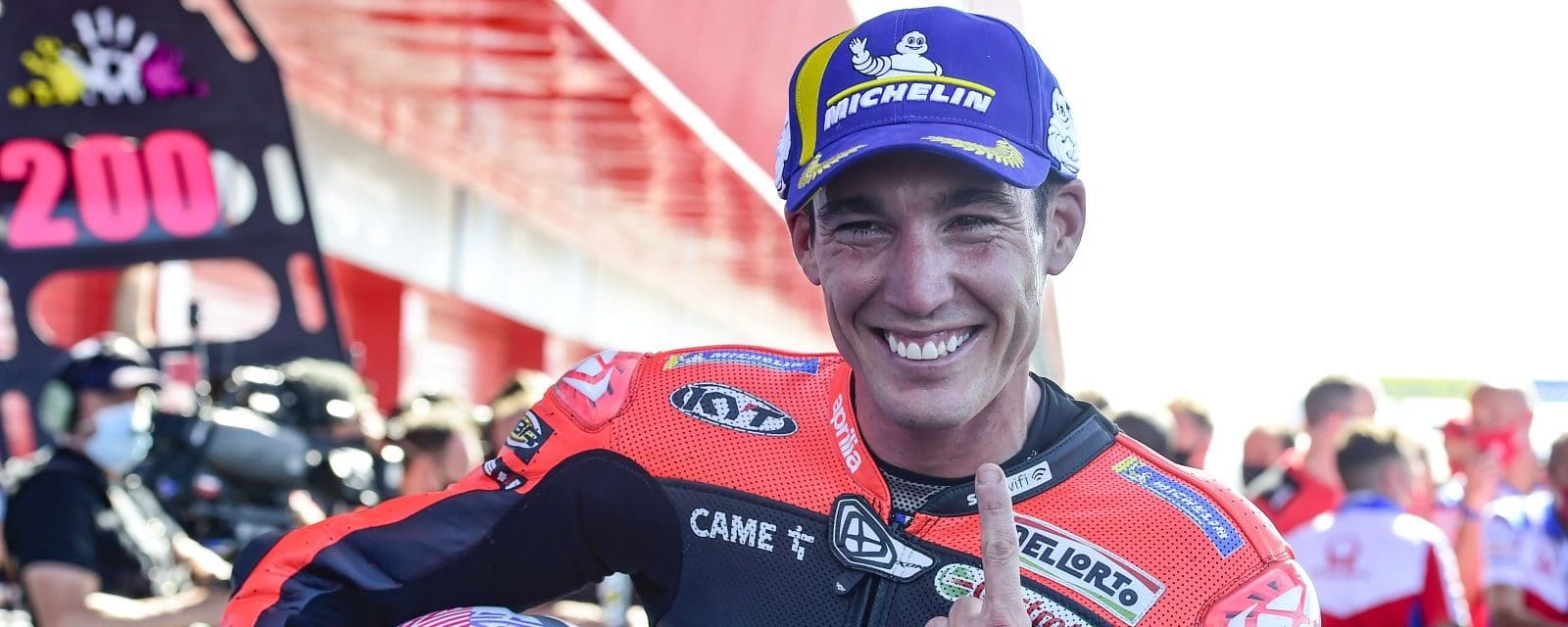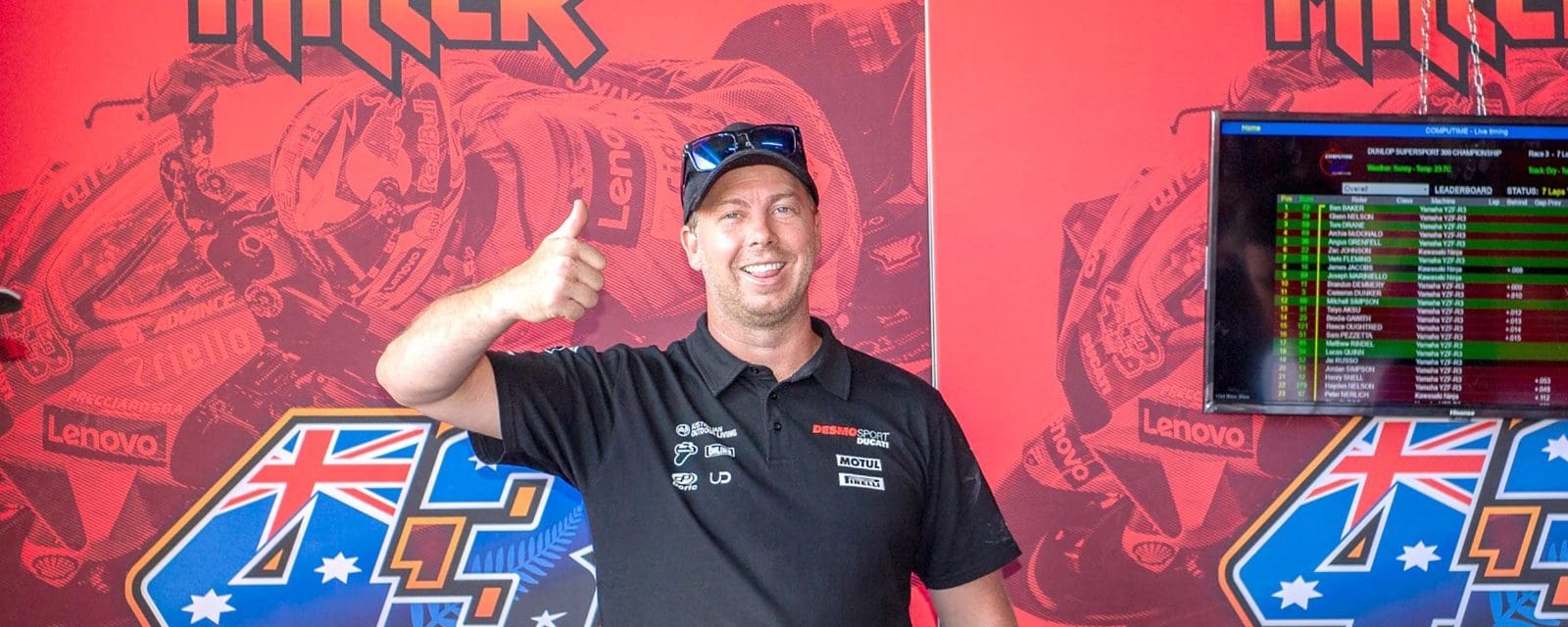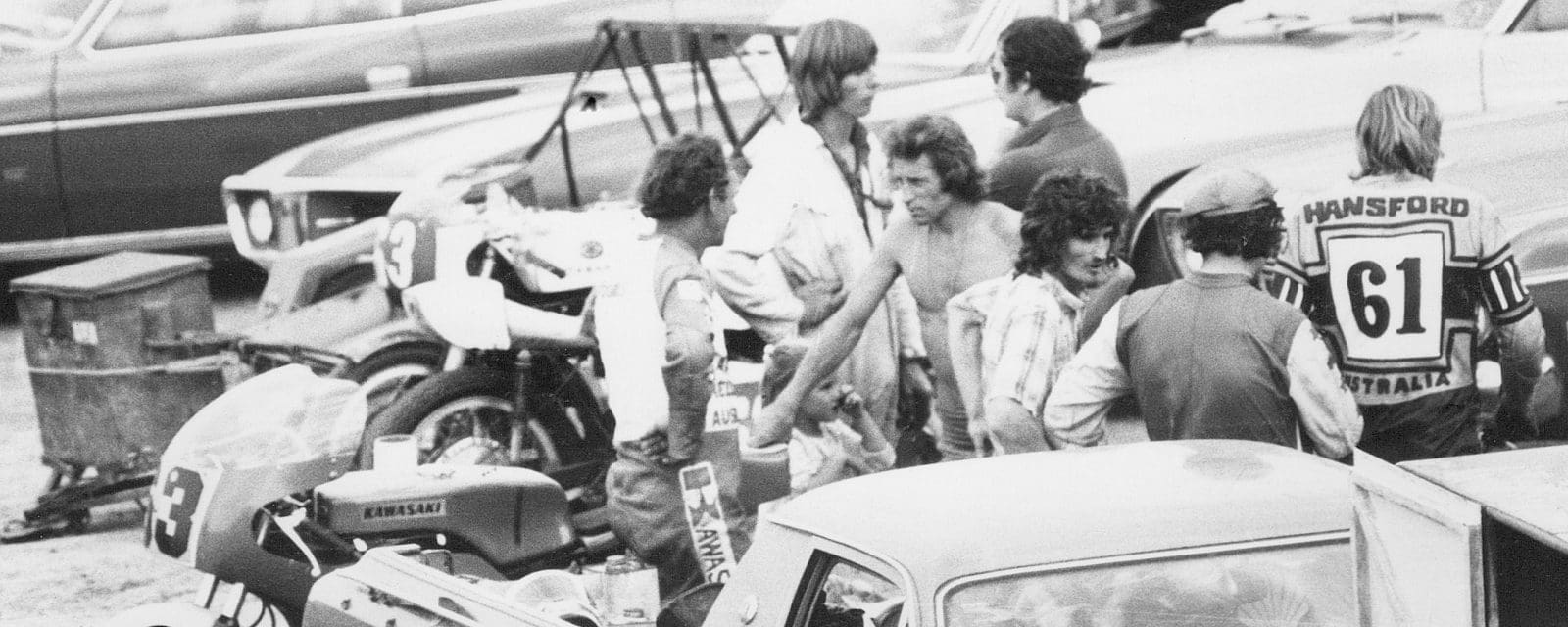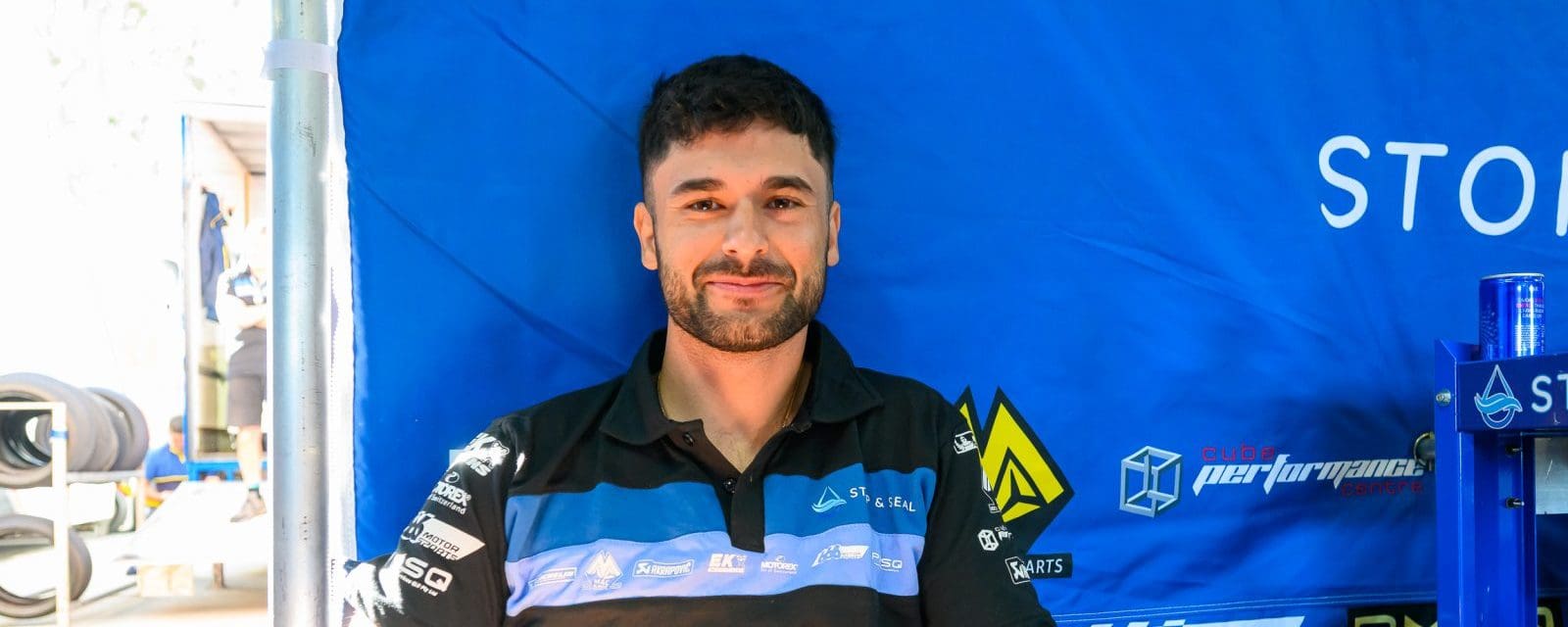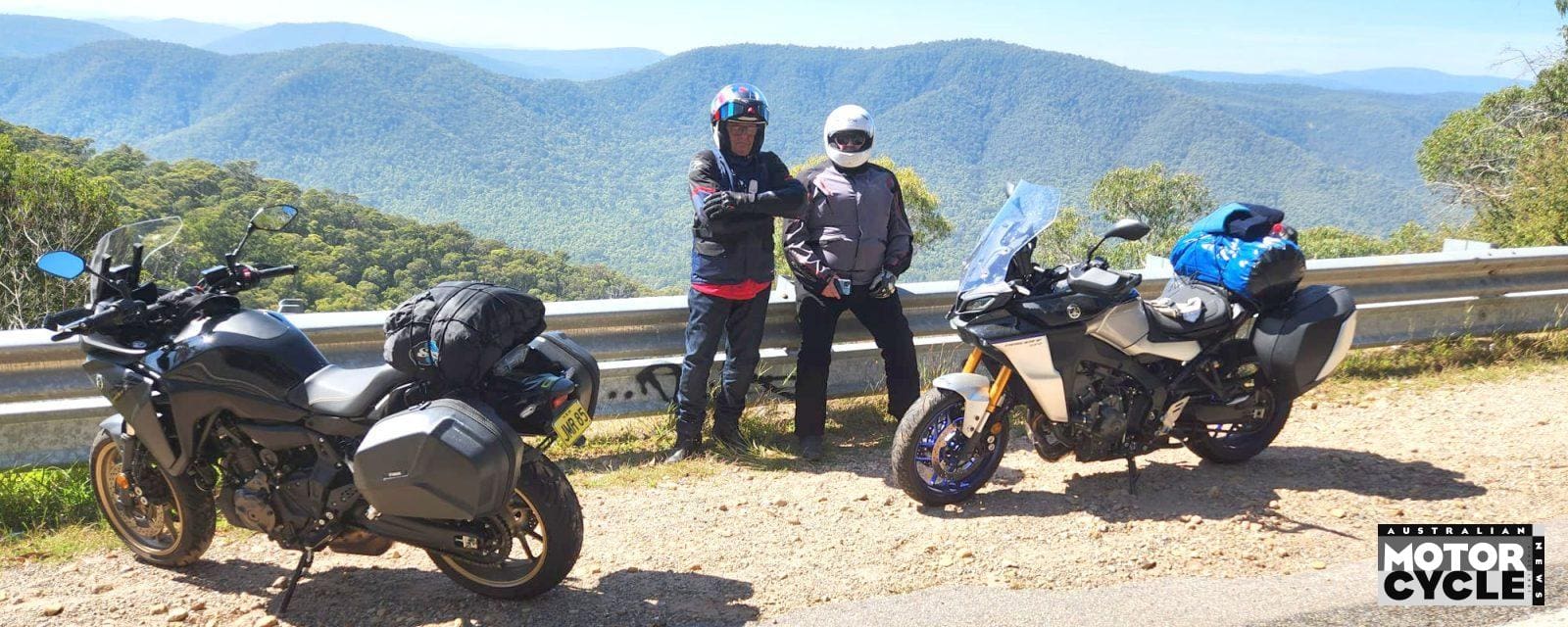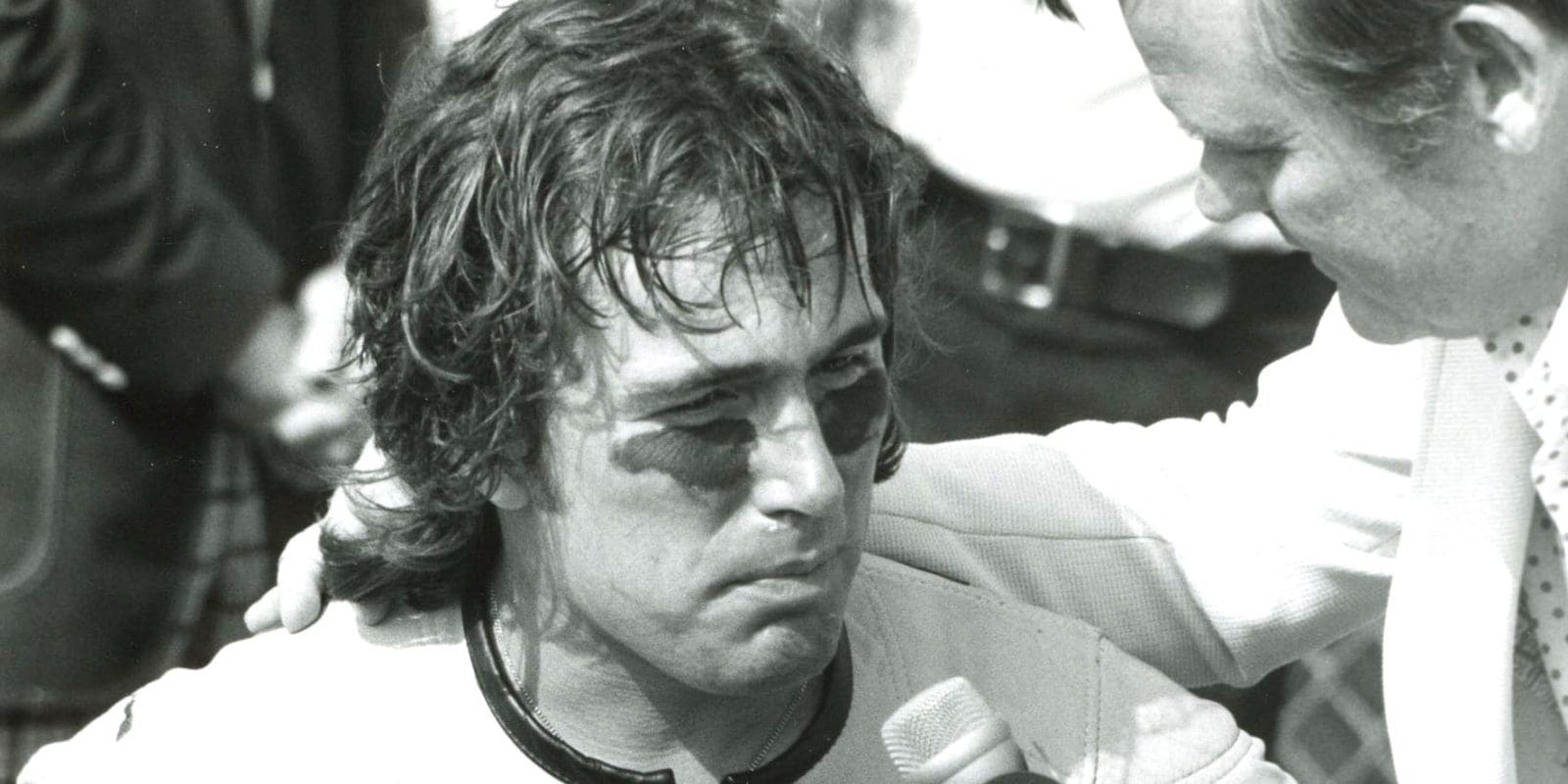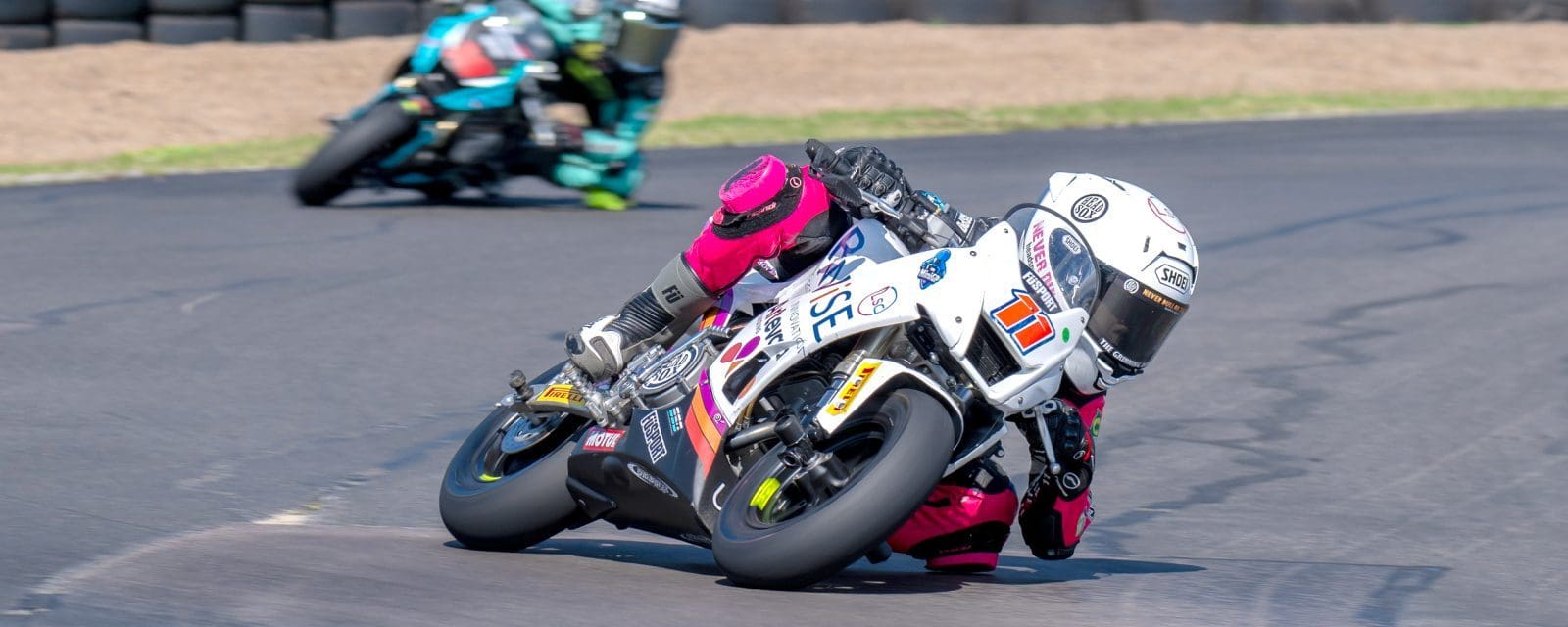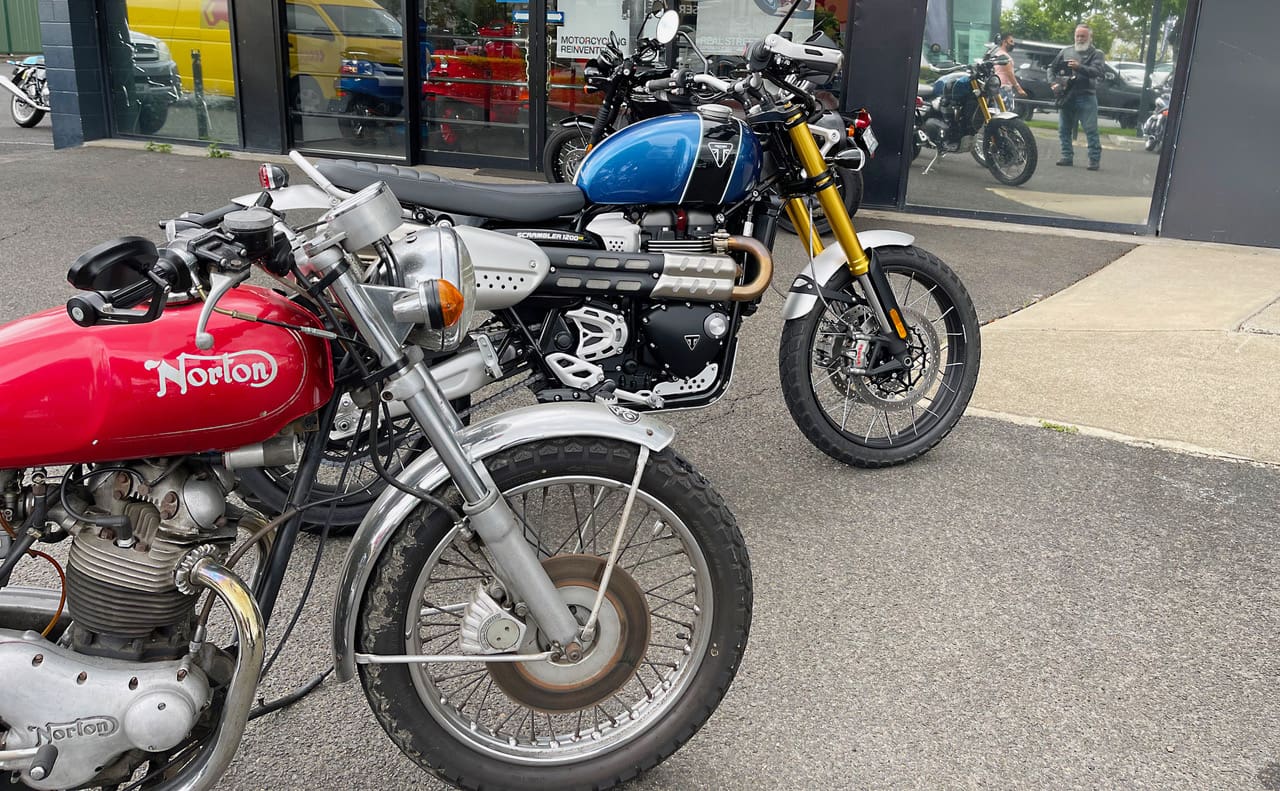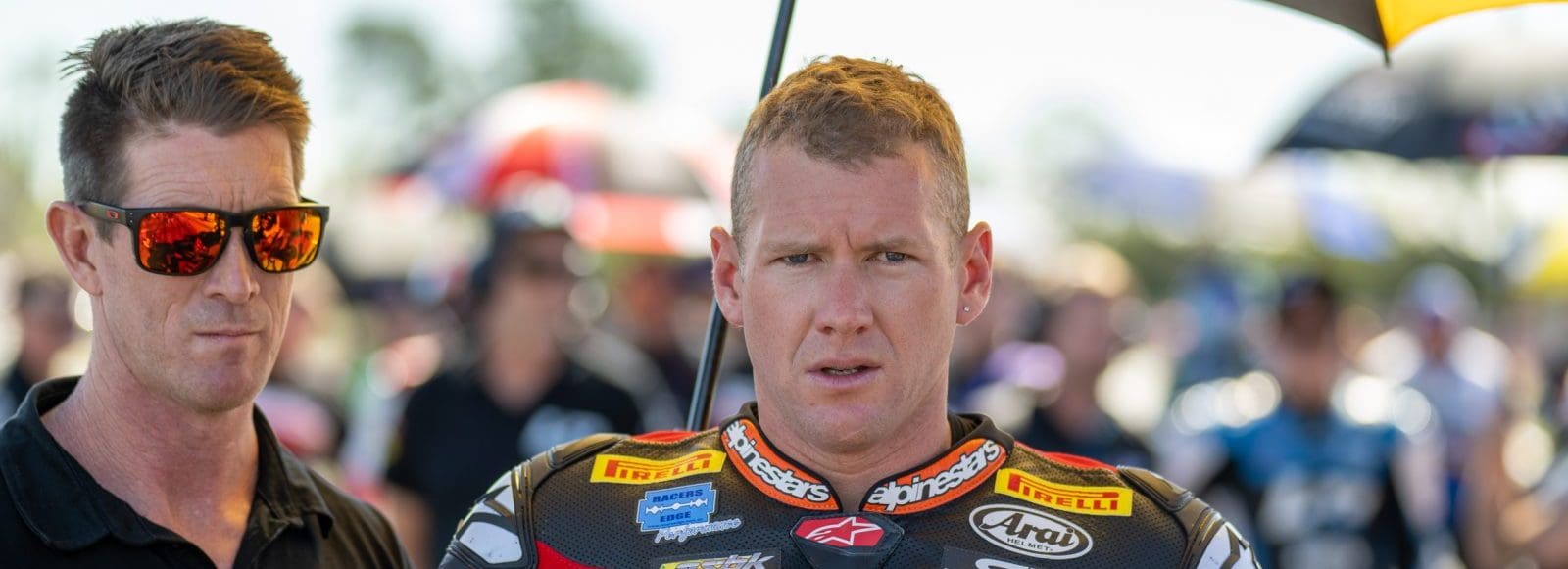Words & photography Ben Purvis
Technology is transforming both the bikes we ride and the cars we share the road with and there’s an unmistakable trend that’s seeing human control increasingly handed over to computers in the name of safety.
Whether it’s the cornering ABS, anti-wheelie and traction control systems that are proliferating on bikes, or the rapid growth of radar technology, lane control systems and semi-autonomous driving solutions emerging on four wheels, we’re increasingly finding that a computer stands between us and the vehicles of which we’re supposed to be in control. In theory, all these systems are intended to increase safety, but they also bring new challenges and pose additional problems that need to be addressed as elements of human intelligence and instinct as well as human error are filtered out.
Semi-autonomous driving systems, whether they’re Tesla’s ‘Autopilot’, Nissan’s ‘ProPilot’, GM’s ‘Super Cruise’ or any one of a dozen other trade names used to try to distinguish themselves from the competition, all aim to eradicate the flaws in human drivers by concentrating on the road for them, monitoring other traffic and taking on some of the burden of guiding a couple of tonnes of metal at high speed just metres from other people.
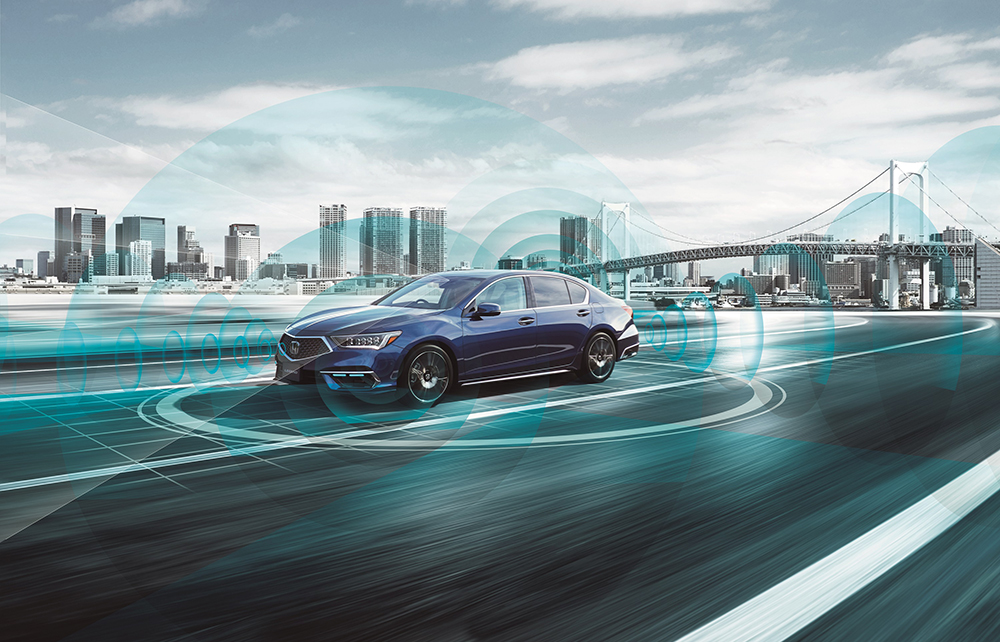
If you’re reading this, you’re probably sceptical about the idea of computer-controlled cars. After all, motorcyclists are a rare breed of enthusiastic road users who pride themselves on improving their skills and have learnt – often via hard lessons – just how important it is to be alert. But bear in mind that most of the people we share the roads with are as interested in their cars as they are in their dishwashers and suddenly the idea of a computer that keeps an eye on their behaviour doesn’t seem so bad.
On balance, despite some well-publicised accidents, these ‘semi-autonomous’ driver aids – which fall under the banner of ‘Advanced Driver Assistance Systems’ or ADAS – are likely to reduce accidents in the long run. The Euro NCAP car safety rating system now requires ‘comprehensive and robust crash avoidance technology’ for a full five-star rating rather than merely the ability to protect occupants in an impact, and as a result kit like radar-assisted auto braking systems, adaptive cruise control and lane-assist are being adopted across a broad spectrum of cars as their makers strive to get the full quota of stars.
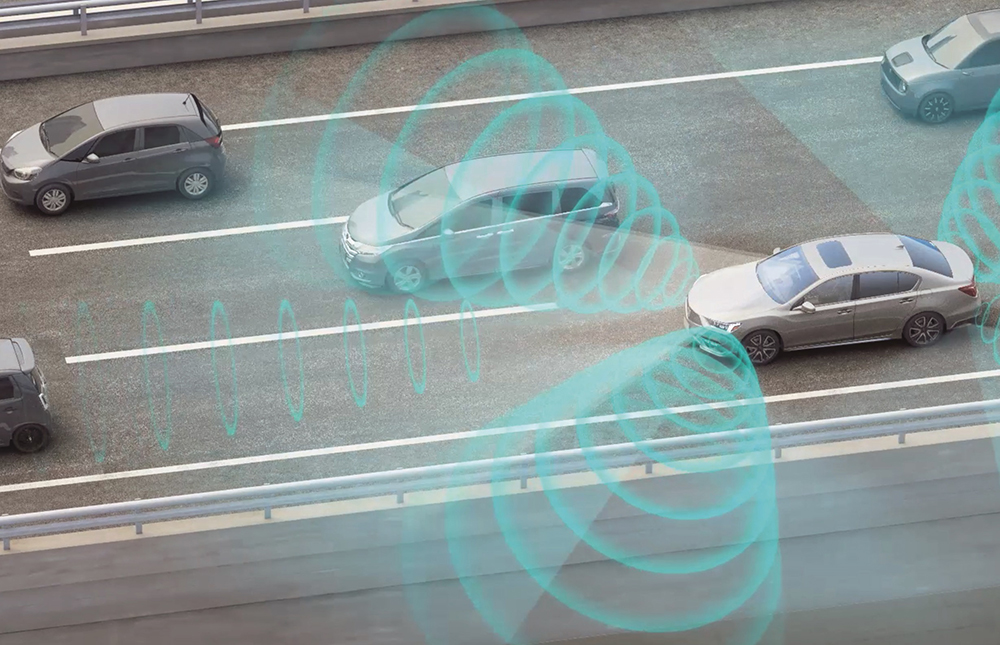
On the downside, safety systems have the inevitable side-effect that the drivers of vehicles equipped with them are certain to start using them as a crutch, relying on the system’s beeps and warnings rather than their own eyes. Marketing spin – using terms like ‘Autopilot’ – doesn’t help, as it gives the impression of a system that, er, automatically pilots the vehicle rather than one that simply assists and needs constant supervision from the human at the wheel. Sure, the small print says that the driver is still responsible, but YouTube is already packed with videos of drivers seeing how far they can take the computer-assists, whether by climbing into the passenger seat, reading books or falling asleep while the car does the driving.
It’s easy to understand the psychology of it. We trust autopilots with the lives of hundreds of people in airliners crossing the world. In comparison, isn’t it easy for a computer to drive a car? As it happens, no. It’s much harder.
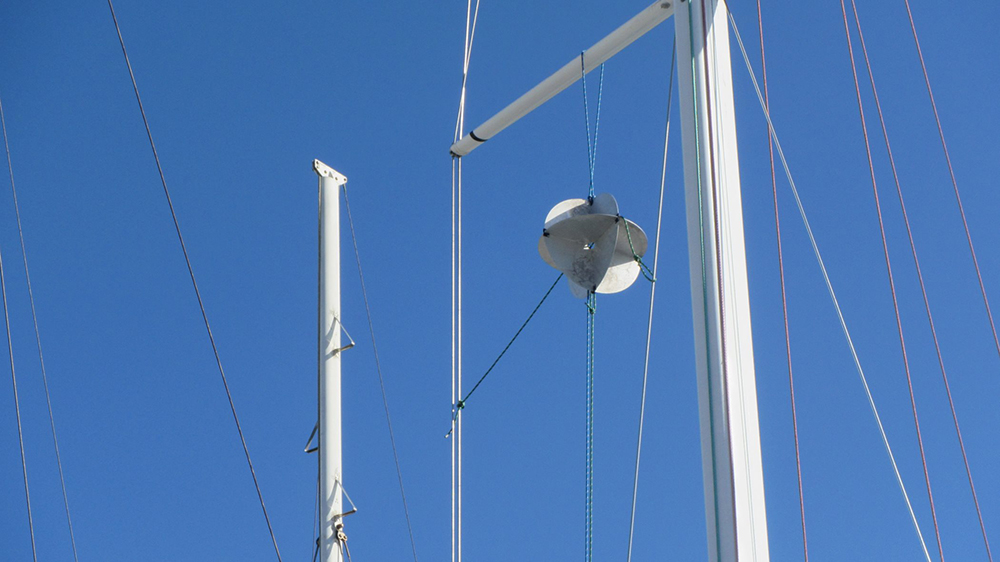
Planes largely have the sky to themselves, keeping huge distances from others, they have the benefit of networks of air-traffic controllers to supervise their actions and once they near an airport there’s a host of ground-based guidance technology to help steer them home. And they still have a highly trained crew on board capable of taking control at a moment’s notice.
Road vehicles, in contrast, need to deal with close-quarters interactions with a variety of other vehicles travelling in all directions, plus the added complication of traffic lights, intersections, roundabouts, speed limits, stop signs and, of course, pedestrians, cyclists and motorcyclists. And who’s in control? Probably a disinterested amateur who’s more concerned with tuning the radio than staying in lane.
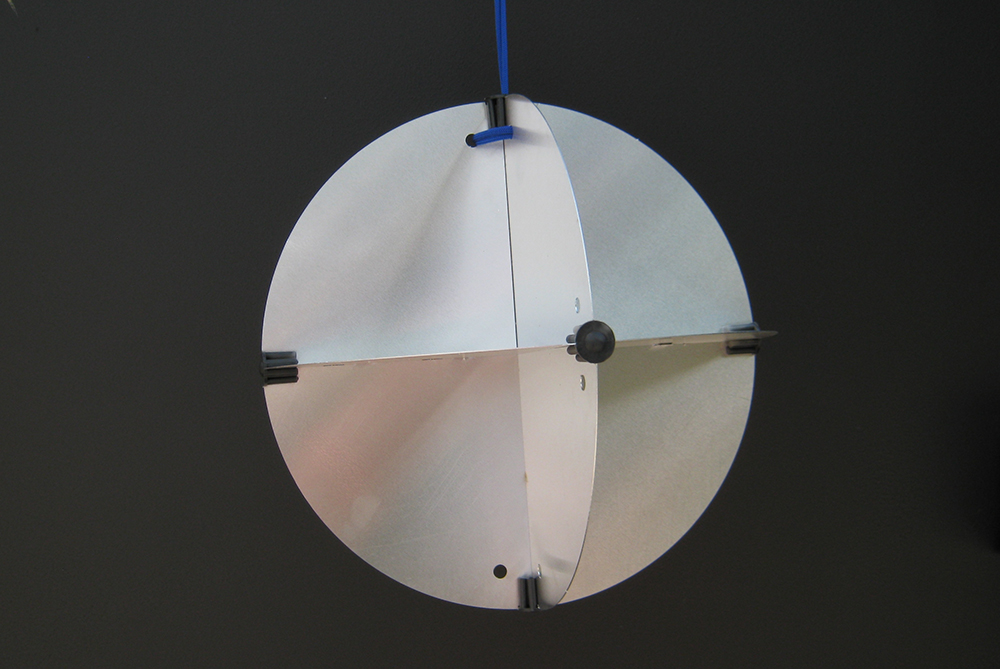
The motorcycle problem
With those challenges in mind, the fact that car makers have been able to reach the level of success that they have so far is an impressive feat, but there’s still a long way to go before we can hope for computers that can stop crashes from happening at all and motorcycles provide a particular challenge to the sensor systems used by semi-autonomous vehicles.
Bikes are much smaller than cars, making them a harder target for radar, LIDAR or cameras to pick up and meaning that the car equipped with those systems is likely to get closer to a bike before it’s able to react. What’s more, the construction of motorcycles, often using a lot of plastic or even carbon fibre for their bodywork, means they don’t tend to reflect radar waves as efficiently as the big metal surfaces that cars present. Great if it means a police radar detector can’t latch on, not so good if a dopey driver, relying on his radar-assisted cruise control system, is speeding towards you.
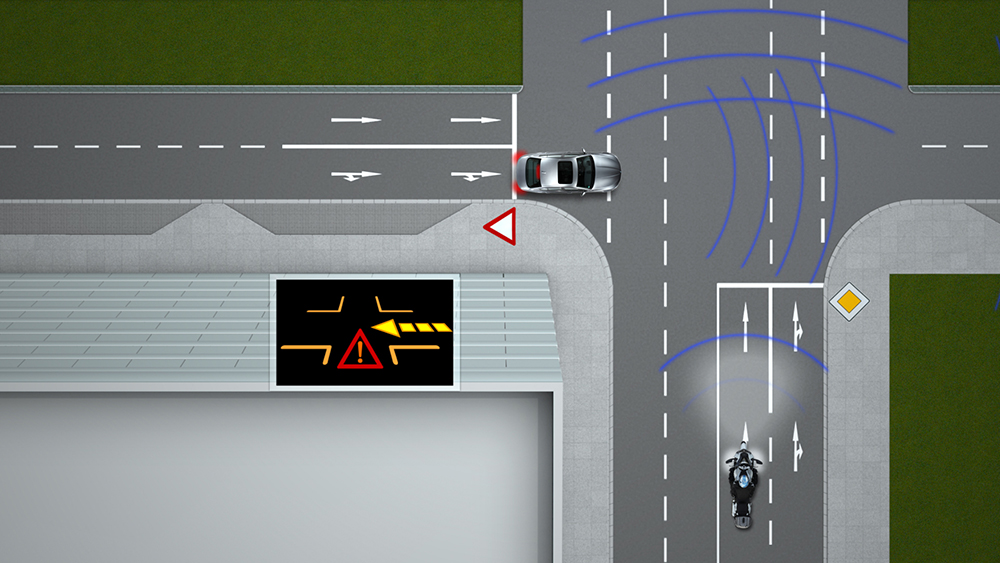
Fortunately, bike firms are already working on solutions to the problem, which is effectively a high-tech version of the ‘sorry, didn’t see you mate’ issue that’s been at the heart of so many bike-vs-car accidents over the last century or so.
Both BMW and Suzuki have filed patent applications for motorcycle-mounted radar-reflectors that will make it easier for the automotive radar sensors that most adaptive cruise controls and auto emergency braking systems in modern cars rely on. And far from being high-tech gizmos, both companies (which, it’s worth noting, are car makers as well as motorcycle manufacturers) have hit upon the same simple, age-old solution that’s been used for decades at sea, where small boats have long faced the same problem that motorcycles are running into as the technology develops.
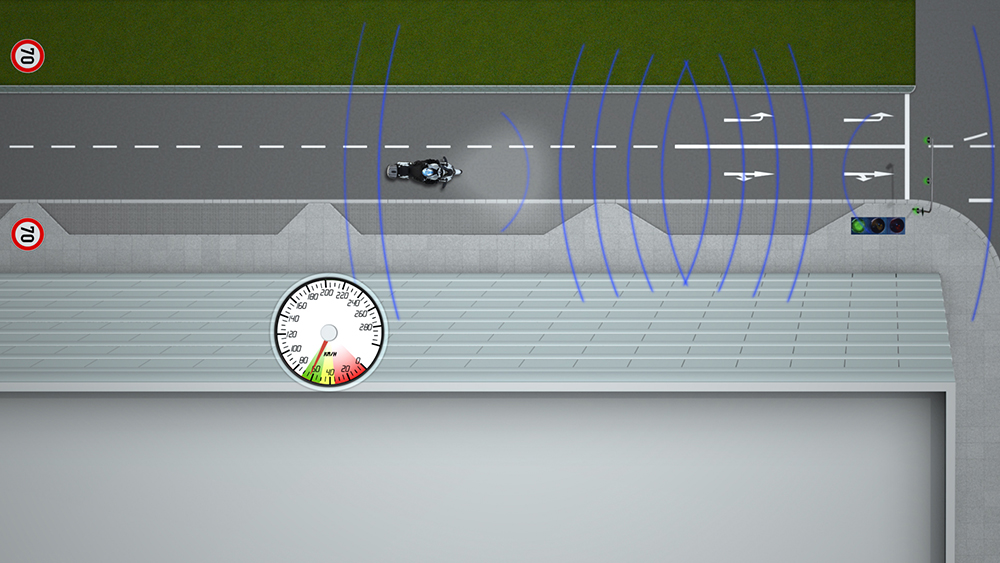
Like bikes, many yachts and leisure boats are largely made of non-radar-reflective materials like plastic or fibreglass, and like bikes they share their environment with much bigger machines that pose a huge risk to them if they’re not spotted. The result is that radar reflectors are widely used, and even mandatory for some boats, to solve the problem.
They’re simply made of radar-reflective sheets – metal or metal-coated plastic – arranged to create a ball or kite-shaped three-dimensional shape that reflects radar waves directly back at their source. Whatever direction a radar signal hits the reflector, it will strike a three-walled section with 90-degrees between each of the walls to form an open-sided box known as a corner reflector, with the key property that it reflects straight back at the source. It’s the same thinking that’s used in reflective road signs and cat’s eyes, just reflecting radar waves rather than light waves.
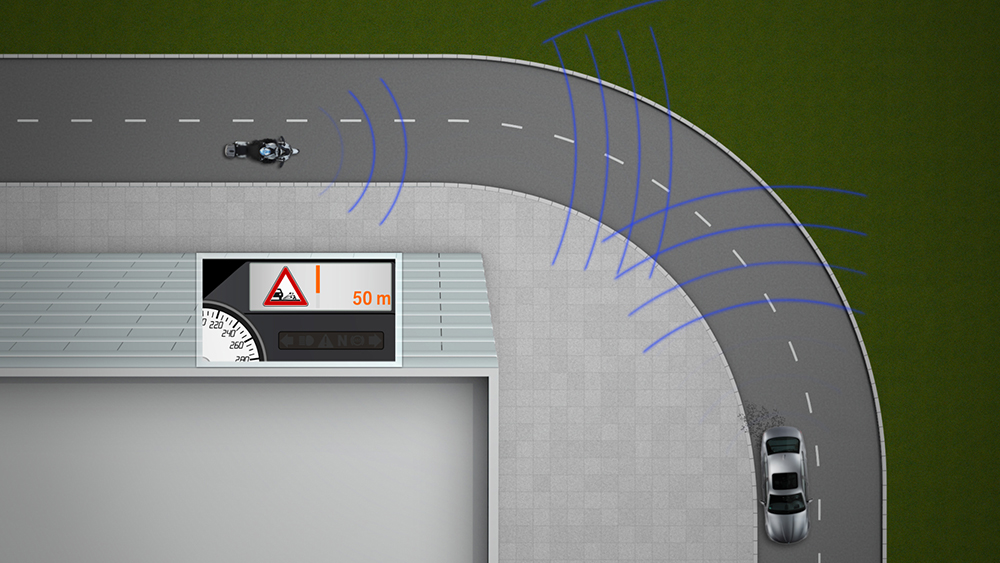
While the radar reflectors used on boats are large, often 30cm or more in diameter, those needed to reflect automotive radar can fortunately be much smaller. BMW’s patent application shows them mounted on the bar-ends and on the ends of the bike’s axles, with the cunning side effect that they work as impact-absorbing crash protectors if you drop the bike. Suzuki’s near-identical idea sees the reflectors mounted on your bike’s mirrors, with additional ones near the indicators front and rear and an extra one on the front mudguard.
Made of metalised plastic, the reflectors would be small, cheap and light, with the added bonus that they’d be easy to retrofit to older bikes.
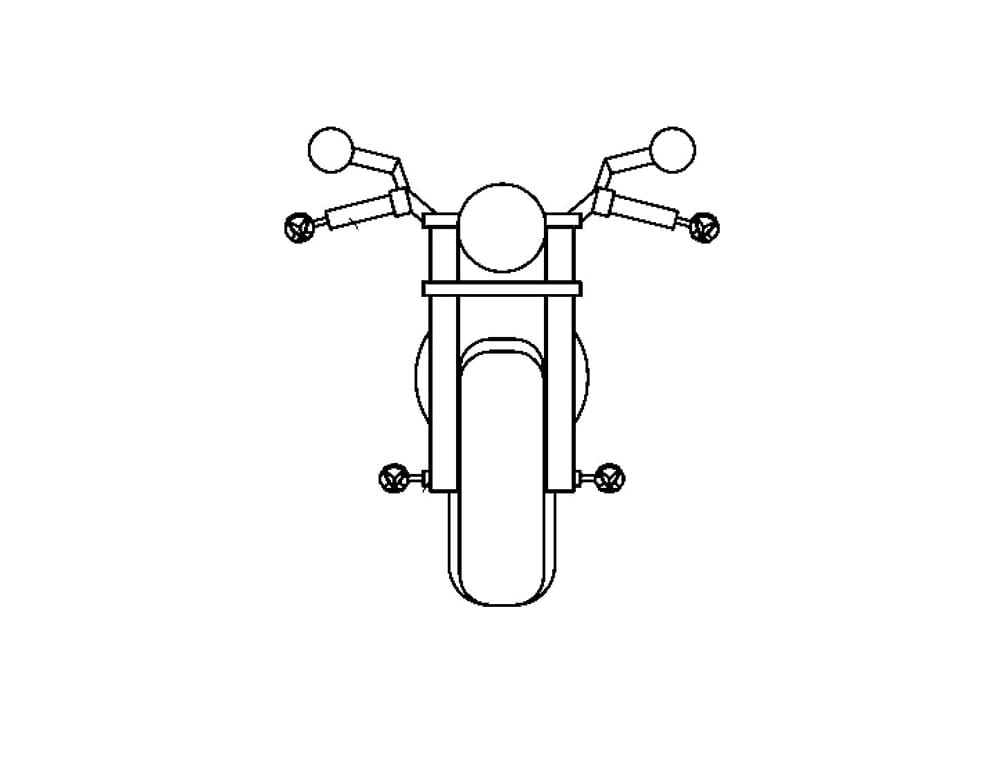
The Connected Motorcycle Consortium
Radar reflectors could well be a useful safety aid as bikes increasingly share the road with semi-autonomous cars but in the longer term it’s going to be vital for manufacturers to adopt a more high-tech solution. That’s where the Connected Motorcycle Consortium (CMC) comes into play.
In operation since 2016, the CMC is made of a group of motorcycle manufacturers who are working together to develop a universal set of specifications for technologies that will allow bikes to ‘talk’ to each other and to other vehicles and even roadside beacons, allowing them to provide early warning of their presence before they’re even in sight of drivers, cameras or radars.
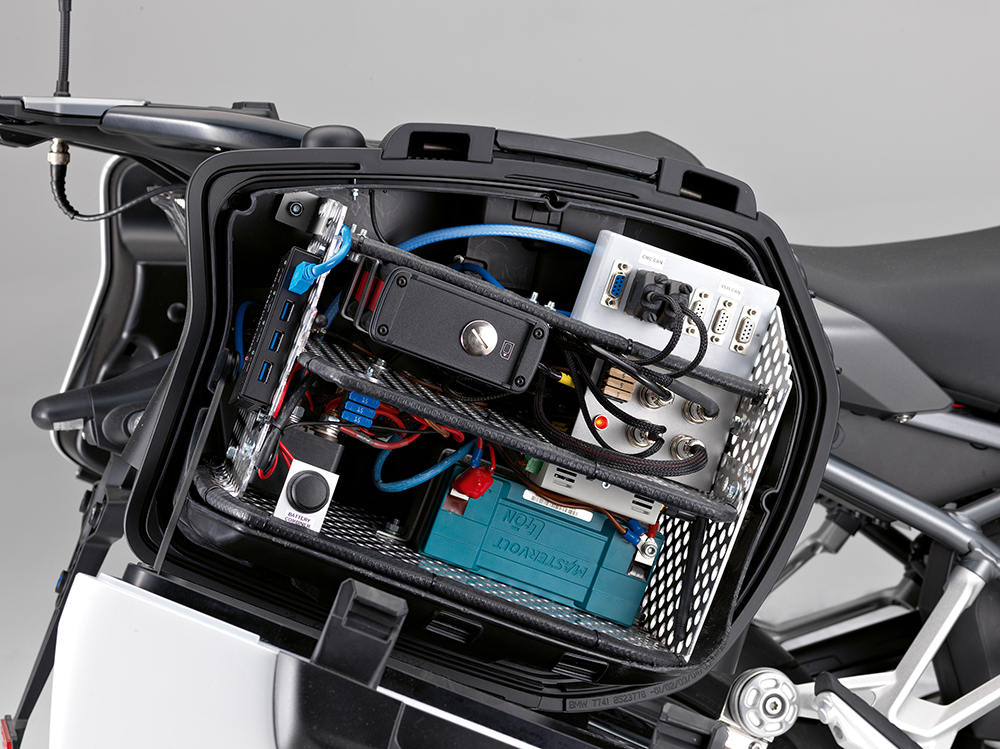
The CMC’s ‘core’ members are BMW, Honda, KTM and Yamaha, with Suzuki classed as a ‘regular’ member and other motorcycle companies and bike-related organisations including Kawasaki, Triumph, Ducati, Alpinestars and even the FIM acting as contributing members.
In December 2020, the CMC published its first ‘Basic Specification’ for a ‘Cooperative Intelligent Transport System’ (C-ITS) that aims to address the age-old problem of drivers not seeing motorcycles.
At the same time, Yamaha, BMW, KTM and Honda agreed to continue with the system’s development and to widen its scope to “include investigating conspicuity of motorcycle by ADAS systems” with ‘CMC Next’. Suzuki and Triumph also expressed their intention to support it.
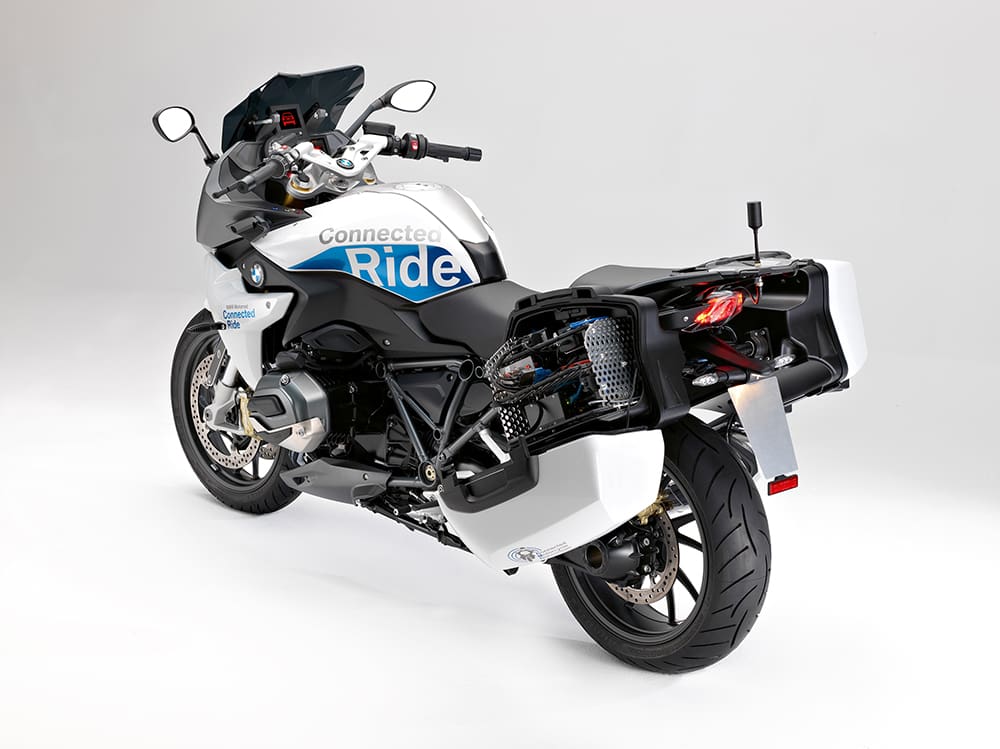
Together, the companies said: “A further crucial step for CMC Next after 2020 is the cooperation with the car industry and other vehicle manufacturers since motorcycles shall communicate in a standardised way.
Modern cars are increasingly equipped with on-board sensor systems (radar, camera, etc.) and driver assistance systems. These vehicle systems need to include motorcycle requirements in order to enhance their safety effects in case of mixed traffic with motorcycles.
“CMC believes that tailored motorcycle/car scenarios and tests need to be developed and standardised.
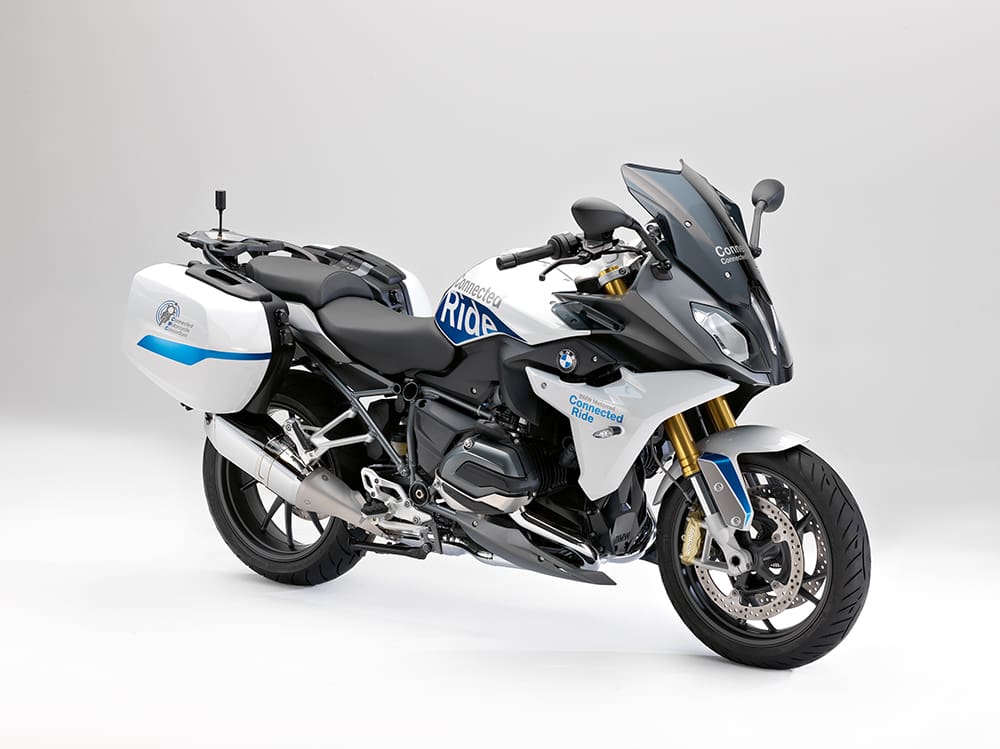
“The new organisation has started its activity in January 2021. The six motorcycle manufacturers encourage other motorcycle manufacturers, suppliers, car manufacturers and the other related organisations to join the cooperation to further pursue the deployment of new elements for motorcycle safety.”
Yamaha’s Executive Officer Takuya Kinoshita, Chief General Manager of Motorcycle Business Operations, said: “The future traffic will be increasingly connected and motorcycles cannot stay aside. Yamaha Motor is part of such future mobility. Motorcycles need to stay a solution and remain an enjoyable means of transport for the decades to come. This is why activities like CMC are so important for the motorcycle industry. Rider safety is one of the key pillars for Yamaha and a shared activity amongst the motorcycle makers in the safety area is a prerequisite.”
Toyoshi Nishida, Chief General Manager of Yamaha’s Platform Model Unit: “We are aiming deployment of connectivity for motorcycles to enhance safety and at the same time to ensure riding comfort and riding pleasure by integrating motorcycles into a future traffic ecosystem.”
In a press statement, BMW said: “As a motorcycle and car manufacturer, the BMW Group has a twofold interest in CMC Next’s topics and sees particular opportunities for synergy in this dual role, especially in the area of onboard sensor technology. BMW Motorrad plans to use rider assistance functions to improve motorcycle safety and, as part of CMC Next, work towards ensuring that both V2X systems as well as the onboard sensor-based systems of motorbikes and cars work hand in hand and are not used as stand-alone systems.”
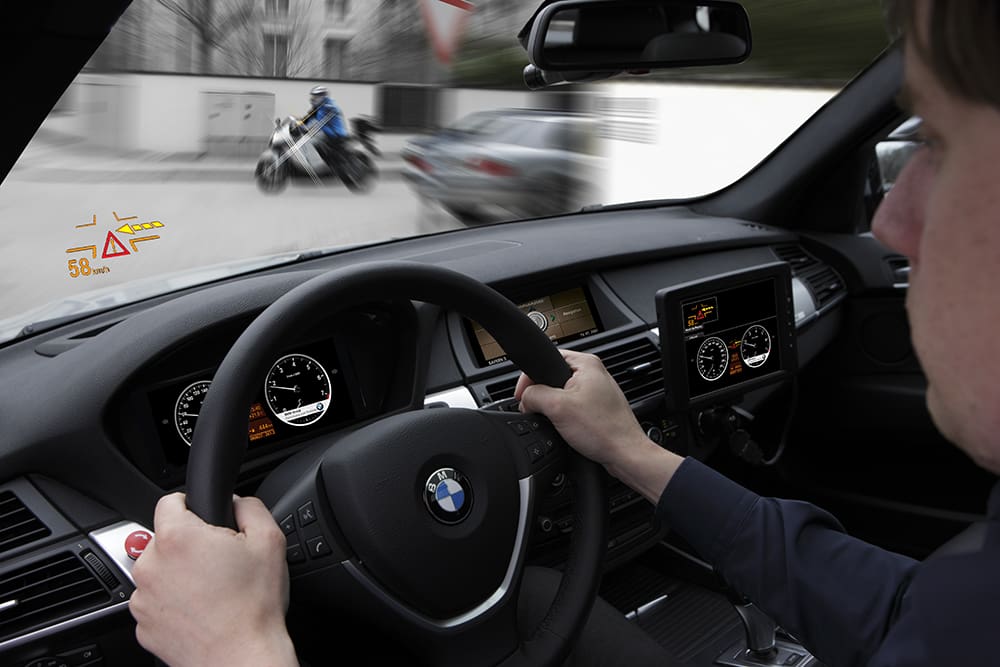
The system is based on short-range radio communications between vehicles that allow them to ‘talk’ to each other about their speed and direction of travel, as well as passing on information about events like traction control or ABS activation that might indicate a slippery road. This information can then be relayed from one vehicle to another as needed.
CMC’s applications include ‘Motorcycle Approach Indication’ where cars will display a message on the dashboard if a bike is nearby but not in direct line of sight, plus a ‘Motorcycle Approach Warning’ in situations where there’s a higher risk of a collision with the bike. ‘Intersection Movement Assist’ and ‘Left Turn Assist’ (‘Right Turn Assist’ in countries that drive on the left) are systems that specifically tell drivers if it’s safe to pull onto a road or turn across a lane into a junction – two of the most common car-vs-bike accident areas. There’s also a ‘Do Not Pass Warning’ which tells drivers who might be considering an overtaking manoeuvre if there’s a bike coming in the opposite direction, plus systems that warn riders about upcoming slippery road conditions or if there’s an emergency vehicle approaching.
CMC has already tested several bikes with the system before establishing its draft specifications, notably the likes of BMW’s ‘Connected Ride’ R1200RS prototype from 2017.
